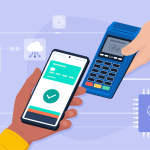It feels like you’ve found “the one” — a customer ready for a long-lasting brand relationship built on personalised marketing. But then, just as quickly as the sparks fly, they fizzle out. Engagement plummets and those once-enthusiastic customers disappear. What went wrong?
In the world of personalised marketing, making the wrong moves can turn a promising relationship into a fleeting encounter. The truth is, our data shows that 81% of customers expect faster interactions as technology advances, and a whopping 73% crave better personalisation. Without these, you risk losing customers because of poor service, which is the number one reason customers stop purchasing.
With timely data at your fingertips, influencing customer behaviour seems like a slam dunk. But there’s a catch: not using all the data you have available can negatively impact customer experiences — and push customers away faster than you can say “unsubscribe.”
So, what can you do to build one personalised marketing journey rather than a series of personalised, yet disparate, interactions? First, let’s define what personalised marketing is, explore some do’s and don’ts, and see best-in-class examples to inspire you to plan for better long-term customer relationships.
The Personalisation Trends Shaping Marketing
Stay ahead with insights on AI, Data, and Personalisation in the latest State of Marketing Report.



What is personalised marketing?
Personalised marketing ditches the one-size-fits-all approach, using data to tailor messages and offerings to individual customers. This can range from including a customer’s name in an email, to recommending products based on past purchases, to tailoring customer conversations with chatbots powered by artificial intelligence (AI). Done right, it fosters loyalty and boosts revenue. Done wrong, it becomes annoying and intrusive.
What constitutes a “personalised” experience continues to evolve, and there’s a stark difference between how marketing teams are adapting. We found that 54% of marketers in India take a lifecycle approach to personalisation — targeting potential customers with awareness campaigns and nurturing existing ones with product support and loyalty programs.
During that journey, marketers engage customers across an average of 10 channels. And that’s exactly what customers expect. But, access to up-to-date data can make it difficult to reach customers across all of those channels — much less influence them to take the next step.
Just like any relationship, personalised marketing requires effort to make it work. Companies have to collect and analyse customer data responsibly, while ensuring it translates into clear audience segments. They also have to share this customer data across departments to create a truly connected experience. Every interaction, big or small, counts and can make or break a relationship.
Maintaining personalisation also requires constant monitoring and adaptation — a challenge for businesses with limited resources. Here’s where size comes in. Large enterprises often have more data that requires the infrastructure and data analysis capabilities to execute complex personalisation strategies.
Small businesses, on the other hand, may rely on simpler tactics to apply customer preferences or offer targeted promotions. While the scale differs, the core idea remains — understanding your audience and tailoring your marketing to resonate with them. But just like in real-world relationships, rushing things or being overly clingy can lead to disaster.
The 6 do’s and don’ts of personalised marketing
Imagine getting served irrelevant ads, or worse, recommendations for something you already bought. The key to avoiding losing your customer is building trust with your audience. Flip your relationship from doomed to devoted with these tips.
1. Don’t rush the “get to know you” phase
Sure, you want to personalise, but not before you understand your audience’s needs. It’s just as important as knowing if your partner likes coffee or tea, roses or tulips, sweet or salty.
Take time to collect accurate data and segment your audience based on this data. Look beyond demographics and delve into past campaign interactions to form a deeper understanding of their preferences. You need all the information about a customer to truly know them — and that data can live anywhere, so don’t let data live trapped in silos.
2. Don’t forget to collaborate
A truly successful customer relationship thrives on open collaboration between departments and shared understanding of the customer. This requires data that’s securely accessible and actionable across the business. Marketing has customer engagement activity, sales has lead details, and service has case history, and commerce has past purchases. Break down departmental silos and share customer data to create deeper connections, anticipate customer needs, and streamline processes for the future.
3. Don’t be selfish
Think of customer data as a two-way street. The more information they share (with clear explanations of how it’s used), the more you can tailor their experience. But remember, it’s a give-and-take. Offer valuable content, discounts, or loyalty rewards in return for their insights.
4. Don’t send too many messages
There’s a fine line between interested and overbearing. And you definitely do not want to appear desperate. Using incomplete or inaccurate data can lead to overwhelming customers with irrelevant recommendations in hopes that they respond. Techniques like waterfall segmentation and propensity to purchase scores can prioritise truly interested audiences and prevent oversaturated promotions.
5. Don’t ignore the little details
Make them feel valued with a truly personalised experience in real time. Offer targeted promotions when they’re most engaged and on the channels they frequent. Imagine getting a discount on that jacket you just browsed — on your phone, while you’re still contemplating the purchase. That’s personalisation done right.
6. Don’t be inconsistent
Consistency in communication is key. Don’t rely on inaccurate or siloed data to only give them what they want every now and then. Set the bar high by unifying your customer profiles across all platforms and departments. This ensures your messaging stays consistent across all channels, no matter how a customer interacts with your brand — chatting on your website, clicking on an ad, talking to a sales rep, or via email.
6 best examples of personalised marketing in action
1. Amazon: customer focus turns forests into trees
The retail and tech giant is famous for its relentless approach to personalisation. From customising each customer’s home page so it contains the items they’re most likely to buy, to using algorithms to offer combination purchases (think of the “frequently bought together” feature), it goes above and beyond to make its marketing useful to individuals.
2. Royal Enfield: strengthening rider connections through AI-driven personalisation
Royal Enfield, a brand synonymous with adventure and community, has always focused on creating more than just motorcycles — it crafts experiences. With Data Cloud, it unified customer data from multiple sources into a centralised platform to deliver consistent, personalised communication across all channels.
With a single view of over nine million unique customer profiles, Royal Enfield could better understand and engage with its community, tailoring interactions to each rider’s preferences and behaviour. The results were remarkable. With Marketing Cloud, Royal Enfield executed targeted, contextual campaigns that doubled customer engagement rates and improved conversion rates by 2.7 times.
3. Spotify: curator, conductor and confidante
More than a few people have said that the streaming service’s knowledge of their musical preferences is almost too good. Offering end-of-year rankings of your most played songs and ‘Discover Weekly’ playlists that predict artists and songs you might appreciate, Spotify’s algorithmic prowess makes each consumer’s experience unique.
Spotify also uses personalisation to amplify customer relationships for its advertisers. Salesforce provides a single source of truth for ad inventory and provides advertisers with real-time information to serve up the right ads to the right customers at the right time.
4. Mahindra & Mahindra: contextual marketing campaigns
Mahindra & Mahindra is elevating customer engagement through 1:1 contextual marketing campaigns powered by Salesforce. Leads from the website seamlessly enter Marketing Cloud, where teams can personalise prospect journeys and automate communications. This integration allows Mahindra to understand customer preferences better and deliver the right messages at the right time. Centralised and templated campaigns now offer consistent, omni-channel engagement, making customer interactions more targeted and effective.
“Marketing campaigns and customer lifecycle management have become much more effective with less effort,” says Ritesh Shah, Head, Digital Product Management, Mahindra & Mahindra.
5. Netflix: giving every user a personal cinema
A great example of the advantage personalisation has over legacy marketing is what video streaming service Netflix does with the ‘movie poster.’ In conventional advertising, this single image of the movie has to try and appeal to everyone, but thanks to detailed customer data and intelligent algorithms, Netflix is able to deliver specific images to specific audience members.
Take the first season of the hit show ‘Stranger Things.’ If Netflix algorithms determined someone was more a fan of fantasy than any other genre, the image they saw was dominated by an unnatural, red sky. If they liked teen dramas, they saw the show’s main teenage love interest. While this might seem complicated, it’s fundamentally a type of personalisation any company can accomplish. It all begins with data.
6. SP Robotic Works: personalisation isn’t just for giants
Given the above examples, you might assume that only the largest companies can pull off personalised marketing. That isn’t the case. SP Robotic Works, an innovative learning platform focused on coding and robotics for children, proves that small and medium businesses can also leverage these strategies to drive significant growth.
By centralising all marketing data on a single platform, SP Robotic Works uses Marketing Cloud to make informed, data-driven decisions and engage customers effectively across channels. “Carefully crafted user journeys nurture our prospects and customers, seamlessly moving them from one stage to the next,” says Sneha Priya, CEO & Co-Founder.
The secret to personalised marketing? Unified data
In today’s marketing landscape, the key to delivering personalised experiences lies in unified data. Without a cohesive view of customer interactions across all channels, personalised marketing becomes an uphill battle. That’s where Salesforce Data Cloud comes in.
Data Cloud is a powerful data platform designed to unify customer data from a wide array of sources within your organisation — ranging from website behaviour and CRM interactions to ad performance and beyond. By bringing this data together in real time, Data Cloud transforms it into accessible, actionable insights that can be leveraged across your business.
With a unified data foundation, your marketing efforts become more precise and effective. Data Cloud enables you to deliver highly targeted, relevant interactions at every customer touchpoint, ensuring that your marketing not only reaches the right audience but resonates with them. The impact is clear: faster lead processing, deeper customer engagement, and the ability to turn market trends into concrete outcomes, such as empowered teams, delighted customers, and increased revenue.
Power Your Personalised Marketing Efforts
Ditch the one-size-fits-all approach and use unified data to deliver personalised customer experiences that drive growth.



























